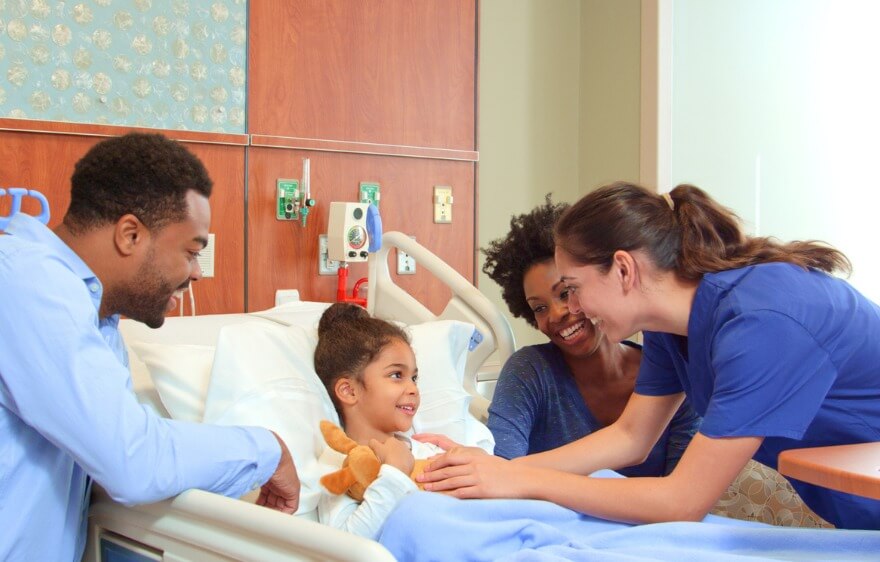Enid Braxton has been a nurse since 2001 — a career choice she made when she was still a child growing up in England. She’s worked in nursing homes, hospice, and pediatric care. In 2017, she was assigned to help care for a non-verbal young child with cognitive disabilities. Her client may not be able to speak, but he communicates daily with Enid — and they’ve formed a special bond. Enid describes her experiences with him.
“He’s been my only patient for the past three years,” she explains about her 12-hour shifts. “From the moment I met him, we’ve gotten along splendidly. That’s one of the things I love the most about being a nurse — learning to read patients.”
Her client’s health issues require that he take daily medications, receive feedings through a G-Tube, and move with the assistance of a wheelchair. Enid takes care of all of these medical aspects of home caregiving, but she also makes sure he gets to have fun.
“He has such a fun personality. He loves watching shows about animals on National Geographic. Every time an elephant or a zebra comes on, I tell him the name of the animal, and he watches with rapt attention”.
He has also learned to communicate with Enid through looks and body language. For example, if she talks too much, he gives her a will you ever shut up look, which makes her laugh out loud. “And a couple of times, I’ve talked to him with coffee breath, and he’s turned his head away from me. He wouldn’t turn back to me until I had a Tic Tac!” she laughs as she recounts the incidents.
Despite his speech and mobility limitations, he is usually in good spirits. He loves to listen to music — Justin Timberlake and Jay-Z are some of his favorites. But his number one choice is always Michael Jackson’s Thriller. “Every time I play that song for him, he starts moving and flailing his arms around in the air, as he attempts to dance. It’s so much fun. He really does make me laugh so much!”
When asked why she went into nursing, Enid becomes serious again. “It’s such a privilege to be able to take care of children — to take care of anyone, really. In all the years I’ve cared for patients, I’ve treated them exactly how I would want somebody to treat my loved ones. It’s so important to make them feel like you’re there; that you care and that they’re safe.”
When comparing being a caregiver at a hospital versus being a home caregiver, Enid explains how providing care in someone’s home affords her with the ability to give her patients her full attention. “I love the one-on-one aspect of it. At nursing homes and hospice, I would sometimes feel heartbroken because I didn’t have enough time to spend with individual patients — since there were so many of them,” she reminisces. “Now I get to give my undivided attention to my client. He knows I’m here, and that I genuinely care for him and have the time to dedicate to him — for his medications, his meals, and his fun times. And honestly, at this point, he’s like my fifth grandson. I’m not just his nurse. I’m his nana.”






